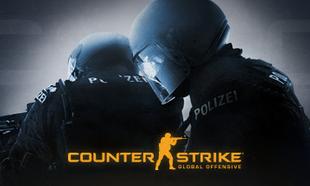The indie sphere is just as important to the world of video gaming as it is the world of film or music, and the last 25 years has seen the indie game become a cornerstone of the gaming industry.
In the last entry in our series, we explored how ‘Undertale’ challenged what we expect from narrative structures in gaming, and our newest entry, ‘Hotline Miami’ showed us that games don’t need state-of-the-art graphics to have style.
One of the core tenants of this series is exploring the cultural context in which these games were released in, and ‘Hotline Miami’ was perfectly placed to take advantage of the cultural landscape of the 2010s.
The year before ‘Hotline Miami’ was released, the Ryan Gosling film ‘Drive’ proved to be a major hit with audiences and critics for its stylish visuals, iconography, and a killer soundtrack.
‘Drive’ is regarded as one of the most important films of the 2010s and was a major factor in synth-tinged visuals and scores to make a comeback in pop culture.
Later in the decade, ‘Stranger Things’ and The Weeknd became era-defining staples of pop culture thanks to embracing synthwave.
In the case of ‘Hotline Miami’, it just happened to hit the zeitgeist right around when this style was in.
Game development is a lot like trying to hit a moving target as cultural tastes and norms can shift seemingly overnight, and the developers of ‘Hotline Miami’ weren’t to possibly know that audiences would have an appetite for synth-tinged violence in 2012.
In this instance, the stars aligned to give us a wonderfully gory rampage through an 8-bit Miami.
‘Drive’ looms large over ‘Hotline Miami’ but the spectre of another auteur-driven project is present; the works of David Lynch.
In between levels, players are greeted by strange characters wearing animal heads, and all the while there’s this cryptic story about brewing tensions between America and the Soviet Union as well as a gang struggle in Miami.

‘Hotline Miami’ is similar to ‘Half-Life’ where you can infer as much or little as you like from the story and just focus on the core gameplay loop.
You return to your apartment between levels, unwind, and then promptly receive advice from your answering machine as where you need to go next.
It’s a wonderfully simple yet effective way to drive the plot forward, and feels at home with the 1980s vibe of the game.
The 2015 sequel ‘Hotline Miami 2: Wrong Number’ is still a game very much worth your time, but by fleshing out the story elements some of the magic was lost.
The original ‘Hotline Miami’ is so memorable because you are only given breadcrumbs of a larger story, and it makes your rampages take place in a fairly contextless grey area where you’re not sure if you’re the hero or villain.
The ambiguity is one of the many factors that makes ‘Hotline Miami’ so special.
The minute-to-minute action in ‘Hotline Miami’, even 10 years later, is still as thrilling as gaming gets.
There is almost a bubblewrap-popping quality to the gameplay in ‘Hotline Miami’ where you can burst into a room and paint the room with either your guts or the guts of your foes.
‘Hotline Miami’ is of course incredibly difficult in slots, but this is negated by simply being able to pick yourself off the ground and pick up from where you left off, bold as brass.
Being able to jump back into the action keeps the momentum up, and for a game that thrives on fast-paced action, this is a godsend.
The 2010’s became the decade where games remembered to be really bloody difficult again, and ‘Hotline Miami’ is a great reminder that for all the style and pizzazz, it can and will wipe you up and down the driveway.
Out of all the games we’re covering in this series, we’ve covered games that feature expansive 3D open worlds and minimalist art styles, but ‘Hotline Miami’ is perhaps the most stylish game of the last 25 years.
If you look at a screenshot, your brain instantly registers it as ‘Hotline Miami’, and is unmistakable.
For bonus points, you can probably hear the soundtrack in your head.
A good game can be elevated to great if it has one distinct element, and ‘Hotline Miami’ is already great by virtue of its addictive combat and storytelling chops.
What puts the game over the edge is the unforgettable soundtrack.
As ‘Grand Theft Auto’ showed us, having an array of licensed tracks can help the game stick in the memory long after you put the controller down, but ‘Hotline Miami’ and its relationship to music is almost symbiotic.
It’s impossible to think of one without thinking of the other, and only a select few pieces of media can pull this off.
Bursting down the door while ‘Hydrogen’ plays is still as fresh and vital as it was when we first played the game back in 2012, and as stated, the combat is stupidly fun, but it’s the soundtrack that pushes ‘Hotline Miami’ into masterpiece territory.
The success of ‘Hotline Miami’ made the gaming industry sit up and take notice: there was a demand for ultra-violent throwbacks that are hard as nails.
‘Hotline Miami’ didn’t invent the top-down genre (hell, this was a genre that has existed as long as video games have, practically) but it certainly made it fresh and relevant for a neon-soaked audience.
Often imitated, and never bettered, 'Hotline Miami' is the rare game that had just as much substance to back up its impeccable style.











































































